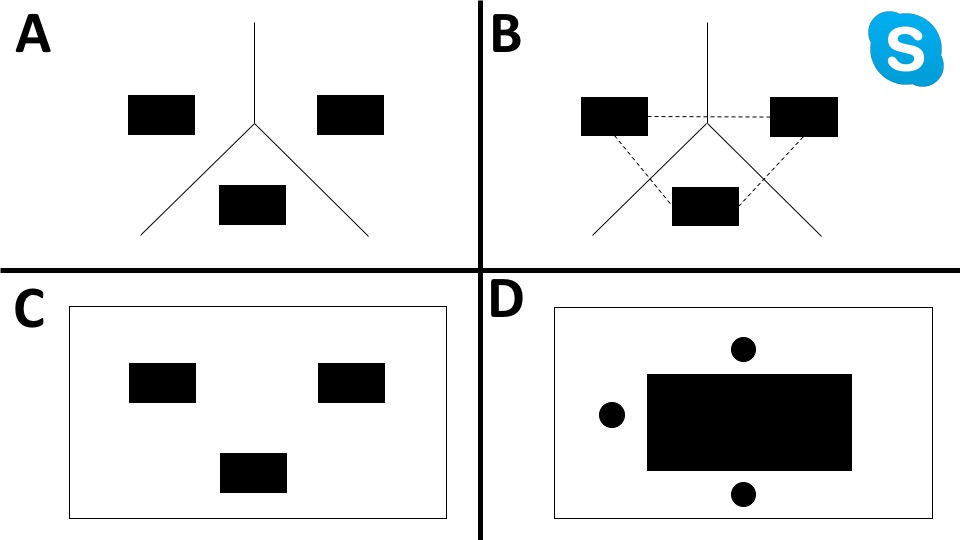This is an interdisciplinary research study between the Workplace Studies Research Group and the CARS Group. This research project resonates with current debates around sociology, interaction, HCI (human-computer interaction) and CSCW (computer-supported collaborative work). We designed and conducted semi-naturalistic experiments on emotion and senses with technologies.
We ran a series of semi-naturalistic experiments on 24 students (8 groups, 3 people each) looking at ways they carry out a collaborative task using GoogleDoc, a shared online document tool, testing out how their collaborative behaviour changed depending on their spatial organisation. We tested 4 different spatial scenarios, testing different methods of collaborative workplace arrangement present in today’s work environments, with and without face-to-face interaction, with and without the ability to speak to one another.
To simulate remote working, the first scenario was: in separate rooms, each with a computer, and access to Skype; and the second scenario was: in separate rooms, each with a computer, and no access to Skype. To simulate two types of face-to-face office work environments the third scenario was: in the same room, with individual computers, on individual tables; and the fourth scenario was: in the same room, with individual computers on a shared table. We collected data using 4 video-cameras recording both the participant’s screens to monitor the online coordination, and cameras recording their physical coordination and spatial organisation dynamic. We also conducted 4 personality questionnaires (Big-5, Bisbas, iri, Teamwork), to aid with teamwork analysis.
Researchers: Dr. Francesca Salvadori; Dr Maria Elide Vanutelli; Prof. Giampietro Gobo; Prof. Claudio Lucchiari
